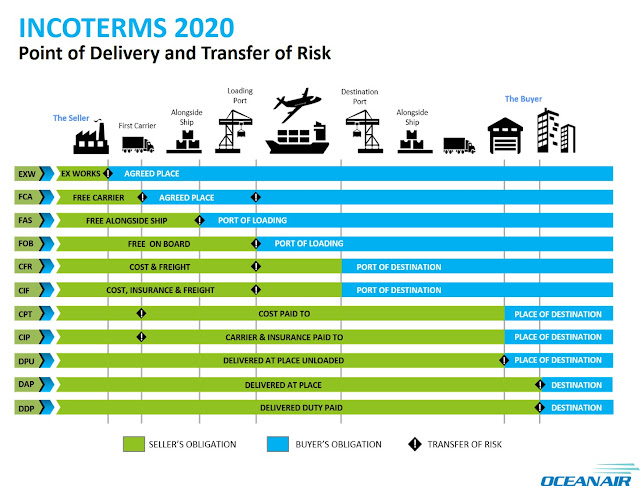When negotiating an international sales contract, both parties need to pay as much attention to the terms of sale as to the sales price. To make it as clear as possible, an international set of trade terms (INCOTERMS) has been adopted by most countries that define exactly the responsibilities and risks of both the buyer and seller including while the merchandise is in transit.
Choose a good shipping company who knows the business
Choosing an experienced trade show shipping company that knows the ins and outs of the industry is very important. The experienced trucking company is more likely to have a good rapport with relevant unions or official contractors like Freeman, GES, PICO, etc. Good relationships can help avoid service delays and may prevent your drayage costs spiraling in the event of a mishap.
Also, choose an experienced trucking company who knows the venue and will help deliver your product in the most highly and efficient manner. Whether it is McCormick Place in Chicago, the Moscone Center in San Francisco, Santa Clara Convention Center, San Jose McEnery Convention Center or Javits Center in NY, If your carrier has specific venue experience, you benefit too!
If you don't know where to find these companies, you can also turn to truck brokers for help. They have connections with private carriers who can move your freight in a dedicated truck giving your goods full attention.
Take advantage of ATA Carnet and pay $0.00 duties and tax
Both TIB ( Temporary Importation under bond) and ATA Carnet can be adopted when claiming exhibit goods, however a ATA Carnet is more convenient.
Usually, the ATA carnet will be issued by your shipper and sent to your nominated custom broker. The broker would attach a bill of lading, air cargo manifest copy along with original carnet package to hand into their local customs office. Once custom officers stamp and sign on the appropriate fields, the shipment is considered cleared.
An ATA Carnet would eliminate the need to post a bond and pay duties and taxes but the only requirement is the importer has to reexport the goods along with original carnet package back to the shipper before the deadline (usually within one year)
Time is Essence
You have two options to ship your trade-show goods to your show: the advance warehouse or the show site.
When shipping to the advance warehouse, your freight may arrive up to 30 days before the show dates — check your show’s exhibitor manual for information on advance warehouse ship dates. If you hire a personal contractor to build a very big and complicated booth with everything customized, I would suggest shipping your needed goods to the advance warehouse as quickly as possible. Shipping to the advance warehouse gives you the ability to track your freight and ensure that it has been received, with plenty of time to double-check. Also, your freight will already be in place when you arrive for the show setup. Although some show decorators may charge higher drayage and storage fee for a shipment sent to the advance warehouse, the benefits generally outweigh the cost. On the opposite side, if you choose a standard package booth using an official contractor, then you can just ship to the show site on move-in dates.
You will also need to watch out for the potential waiting time. For example, at a very popular show, trucks full of supplies sometimes have to wait for hours in the marshaling yard before they are able to deliver their shipments at the unloading dock. Marshal-yard fees range from $45 to $85 an hour. If you know the show is on a big scale and the waiting time is unavoidable, you should ask to deliver the goods as early as possible, or even ship to the advanced warehouse as mentioned above.
Participating in a trade-show can be super costly. Hopefully, you will prepare a successful trade-show without making expensive mistakes. Contact your local American Lamprecht Office if you have any questions, we are always happy to help!









